Last updated on March 6th, 2022
Our site is reader supported, this means we may earn a small commission from Amazon and other affiliates when you buy through links on our site.
Lupin flowers produce some of the most breathtaking masses of colour. They have sturdy, erect spikes from which flowers are produced and the fan-shaped foliage emerges horizontally. The flowers are very similar to those you would find with sweet peas because they grow in densely packed groups. The colour of the flower spikes ranges from pink to white, deep blue, purple and even yellow.
This is a fairly long-lived perennial that doesn’t require a great amount of care, except for deadheading to promote more flowers. We recommend doing this as soon as the flowers fade. Realistically they just need a sunny spot, well-drained soil, ample water when newly planted, and after that you get to sit back and relax and just deadhead now and again. They make terrific additions to any borders or scattered throughout your landscape, however, because they can grow fairly tall (reaching as tall as 5ft) they are best planted towards the back or middle of flowerbeds.
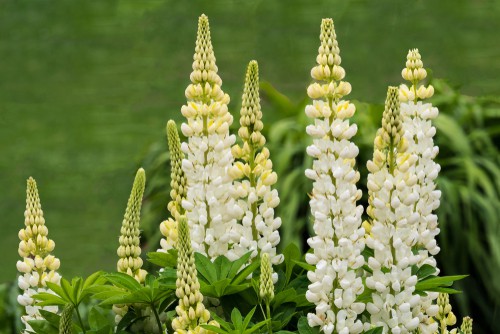
They will typically bloom sometime between early spring through to the first part of July, which is why it is recommended that you plant them with other late-blooming summer flowers so that you get ample colour throughout the growing season.
Lupins are known to be deer resistant
If you live in an area where deer are problematic then planting Lupins could be the solution because they are also known to be deer resistant. Something that was concluded from a survey of the gardening public’s experience that was undertaken by the RHS.
Attractive to bees and butterflies
The flowers will bring many visitors to your gardens such as butterflies and bees.
Garden gold: Planting Lupins will improve the fertility in your soil over time because they fix nitrogen levels that improve the soil quality. If you have poor soil Lupins can be grown from seed direct into the ground from around April and they can be used as green manure by digging them into the soil from around September after flowering, which will improve nitrogen levels in the soil.

Planting Lupins
The most common colour you will find of Lupin flowers is purple, followed closely by blue, yellow, pink and white varieties. You can also get mixed colours because if grown from seed, they very rarely come true to colour. They also prefer cooler areas with an average pH level but grow well in acid, chalky or neutral soil as long as it’s well-drained.
When you plant them you should do so in full sun or light shade and make sure that you loosen the soil deep into the ground so that the taproot is able to grow properly.
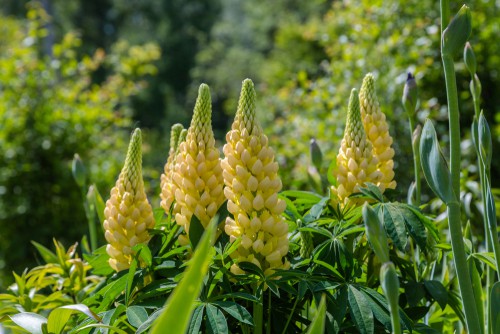
| Sunlight | Full sun to light shade |
| Maturity | Blooms between July and August |
| Height | 0.5 to 1 metre |
| Spacing | 30cm |
Taking cuttings, sowing seeds and dividing
You can grow these plants from seeds, however, unfortunately, they don’t always grow true to colour. You can also take basal cuttings, which is by far the best and most successful way and guarantees what flower colour you will get, or from divisions which can be tricky but also guarantees the colour.
Sowing seeds
If you are growing from seed the germination is increased greatly if you give it a seven day cold treatment. For this, you place the seeds inside damp paper towels and then place these inside a ziplock bag. Place the bag in your refrigerator and leave it there for seven days.
An alternative method is to soak the seeds in warm water for 24 hours prior to planting. Treated seeds can be sown directly into the ground in spring or summer until the start of August. It is, however, best to plant untreated seeds outside between September and November. If you grow your Lupin from seed it will bloom the first year and you should pinch off spent flowers to elongate the blooming time you get.
Important note – seeds do not usually grow true to colour so you usually get mixed colours.
Taking basal cuttings
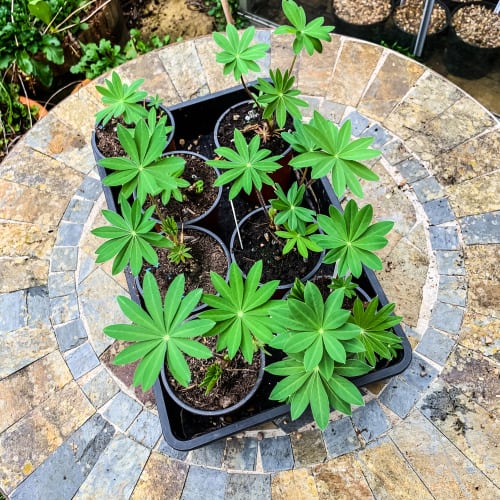
If you are growing from cuttings, you should take a stem from the plant all the way to the bottom of the trunk, going as far down to the root as possible. Pinch the tops out, they should be stubby little shoots. Place the cutting in moist, well-drained soil and using gritty soil is best. Keep it covered while it propagates but give it ample airflow for a few minutes each day so that the plant adjusts properly and if you have a greenhouse just pop them in there uncovered instead and water well.
Start your cuttings in larger pots that you can easily transplant outside without disturbing the roots. Placing three cuttings in a 5-inch pot is usually about right. As long as your taproot remains delicate, do not transplant because your plant will become damaged and fail. Once you see roots appearing out of the bottom of the pot you can plant them out.
You can see a great video on how to take basal cuttings on the gardener’s world website here.
Dividing
Dividing plants is not recommended because it can be difficult as they have a long taproot. However, if you want to divide plants you need to do this in spring and never in autumn as this will almost certainly kill the plant.
Lupin Care
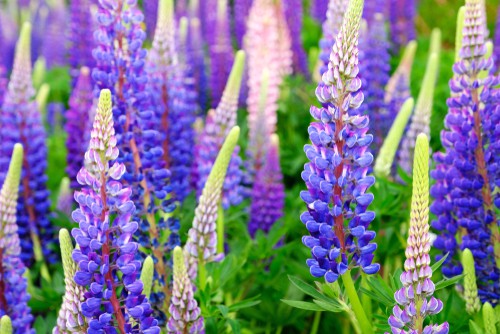
These plants are very easy to grow and will thrive in cool locations, however, because they have tall flowers they are best planted in a sheltered position where the wind will not snap the flowers.
They prefer full sun to light shade (as previously mentioned) in most soil types, even clay soil, although you will need to improve the soil beforehand to help them get through the winter. Once fully established they will tolerate dry soil because they have very long taproots and can get water from deep down into the ground. As Lupins develop very long taproots, it is important that before you plant them you make sure to loosen up the soil very deeply to allow the taproot ample space. In order to promote a healthy plant with large blooms, you should apply organic fertiliser once per month but this is not essential.
Lupin Pests and Diseases
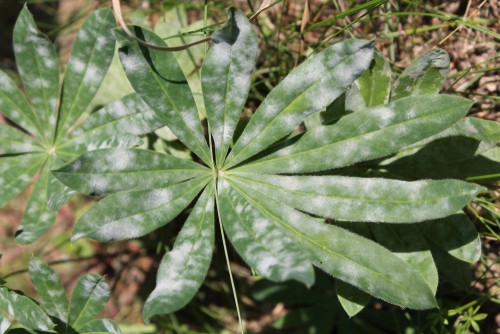
There are not many pest problems associated with this plant. Occasionally it will become infested with aphids, usually greenflies in which case you can pinch or prune off the heavily infested stems of the plant.
You can also purchase ladybirds commercially which are natural predators for these aphids. As a last alternative, you can also use a pesticide if you are facing a very heavy infestation.
A problem many people face with Lupins is with a fungus called powdery mildew, as pictured above, this can be common in areas where it is damp or after we have had prolonged weeks of rain. The best course of action is to remove the affected leaves and spray them with a fungicide. Improving air circulation and removing some leaves will help prevent it too.
Image by Steen Jepsen from Pixabay


